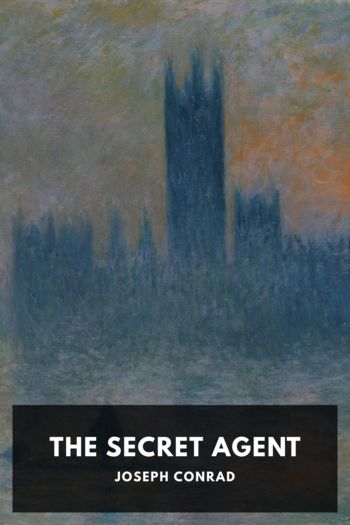Hidden History: Lost Civilizations, Secret Knowledge, and Ancient Mysteries Brian Haughton (an ebook reader .txt) 📖

- Author: Brian Haughton
Book online «Hidden History: Lost Civilizations, Secret Knowledge, and Ancient Mysteries Brian Haughton (an ebook reader .txt) 📖». Author Brian Haughton
The Templar Order was organized in the same way in every country. Each had a Master of the Order for the Templars in that land. The first recorded Master in England, for example, was Richard de Hastyngs in 1160. De Hastyngs and every other Master was subject to the Grand Master, who retained that position for life, and was responsible for organizing the Order's military exploits in the Holy Land as well as their commercial dealings in Europe. The details of how one was initiated into the Order are obscure, in fact, this is one factor that worked against the Templars later in their history. It is known that apart from swearing to the vows of poverty, chastity, piety, and obedience, prospective members had to be of noble birth and willing to relinquish all material goods, signing their entire wealth over to the Order. As soldiers, the Knights Templar swore never to surrender to the enemy. A glorious death on the battlefield fighting for God (against what they saw as the forces of evil) ensured that the knight would ascend directly to heaven. This fight-to-the-death attitude, along with their rigorous training and strict discipline, made the Templars a feared enemy on the battlefield.
The Knights Templar soon gained the backing of the Holy See and the monarchies of Europe. In England, King Henry II granted the Templars land across the country, including extensive holdings in the Midlands. At the end of the 12th century, in an area between Fleet Street and the River Thames in London, the English Templars built their headquarters, the Temple Church (or the Round Church), constructed on a design based on the Church of the Holy Sepulchre in Jerusalem. There was a compound attached to the church that contained residences, military training facilities, and recreational grounds. Members of the Order were not allowed to travel into the city of London without permission from the Master of the Temple.
In the year 1200, Pope Innocent III issued a Papal Bull, which declared that all persons and goods within Knights Templar houses were immune from local laws. What this really meant was that the Templars were exempt from taxation and tithes; this was a vitally important point in the rapid accumulation of wealth the Order enjoyed. Through their massive holdings in Europe, the Templars amassed enough wealth to pay the large sums required to outfit their soldiers and support staff in the Holy Land. Numerous fortifications were erected at strategical points throughout the Holy Land, using money acquired through donations and their vast commercial enterprises in Europe (which included the buying and leasing of land and property and the lending of money). Nevertheless, in spite all these efforts, the bloody military struggles of the Templars against the numerically superior forces of Islam were to prove ultimately unsuccessful. In 1291, the remainder of the Templars were annihilated by more than 10,000 Mamluks at the city of Acre, in Western Galilee. With this defeat, the Christian hold on the Holy Land ended, and people in Europe began to doubt whether it was still God's will to send knights out to fight against Islam. With the Crusades over and the the Holy
Land lost, many also began to question what purpose the Knights Templars served now that the reason for their existence was gone. The wealth and power enjoyed by the Order, with its exemption from taxes and huge landholdings throughout Europe, made them many-and often dangerousenemies. In the end, this was to be their undoing.
In October 1307, King Philip IV (the Fair) of France had all the Templars he could find in the country simultaneously arrested and imprisoned. Philip also seized all the Templar property and possessions, accusing the entire Order of a variety of heretical crimes, including spitting and tramping on the cross, homosexuality, and the worshipping of idols. A number of the Templars were subsequently tortured by Inquisitors until the required confessions were extracted, and they were then executed. It is highly unlikely that confessions obtained under such conditions had any basis in truth. In 1314, the remaining Templar leaders, including the last Grand Master Jacques de Molay, were burned at the stake in front of Notre Dame Cathedral on the he de la Cite, an island in the river Siene in Paris. Apparently, before becoming enveloped by the flames, de Molay is said to have prophesied that Philip IV and his co-conspirator, Pope Clement V, would be dead within





Comments (0)